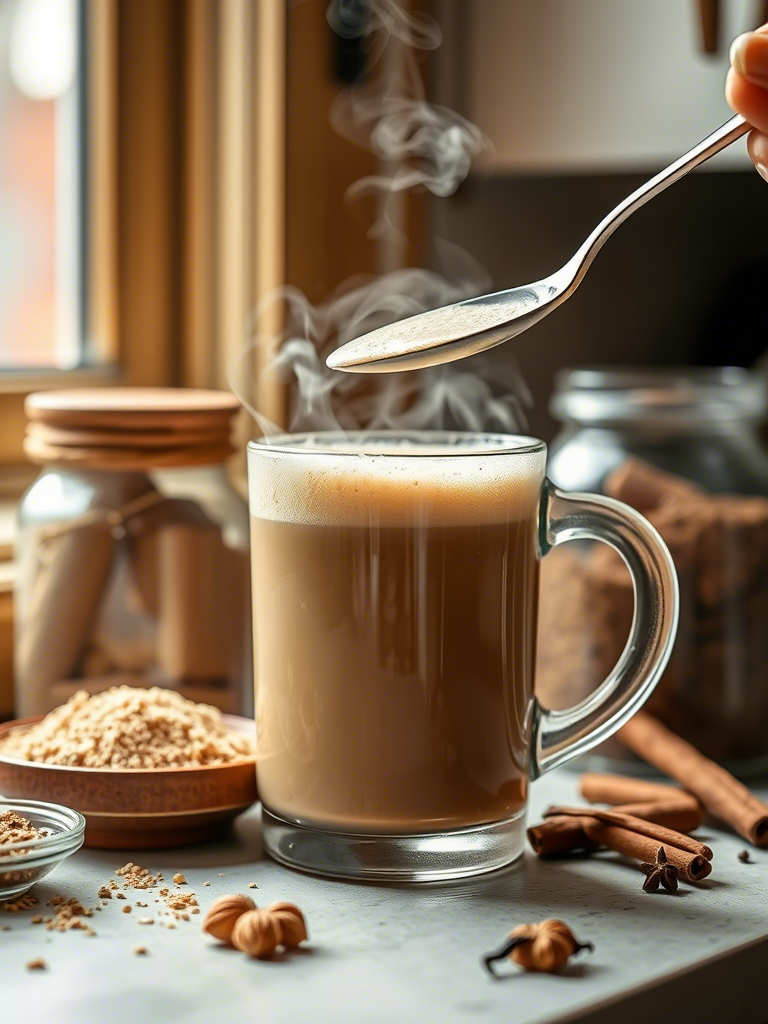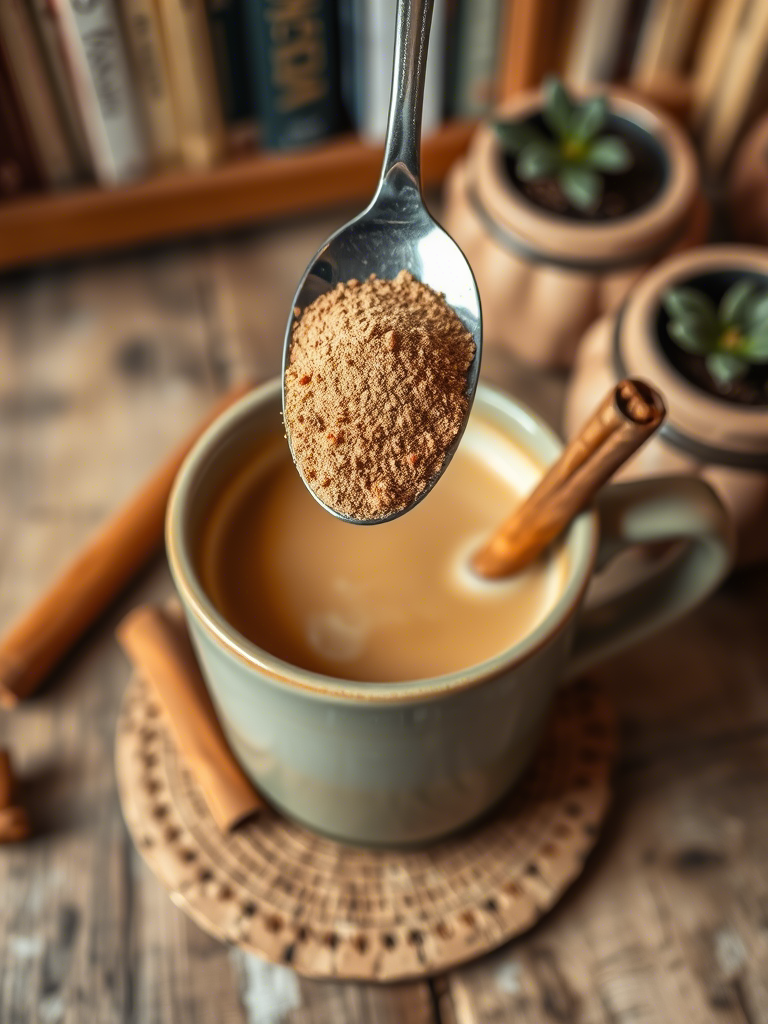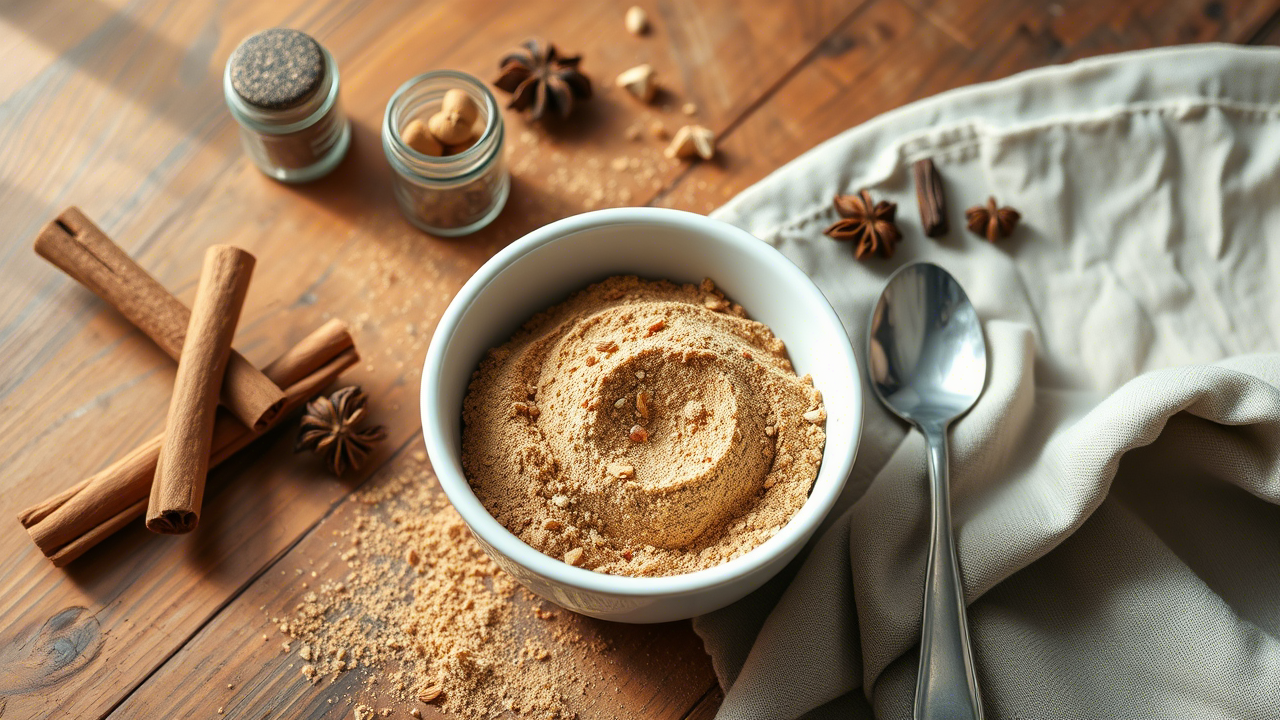There’s something wildly comforting about chai. Not the kind you get from a syrupy dispenser at a chain café—but the deep, spicy, earthy kind that wraps itself around your soul. Now imagine capturing all that bold flavor in a simple, shelf-stable chai latte powder mix. Not only possible—but surprisingly easy. This article is for culinary pros, baristas, and passionate home cooks who want the real deal without sacrificing convenience.
This is not a shortcut. It’s a crafted shortcut.
We’re diving deep into how to develop, refine, and optimize your own quick & easy chai latte powder mix—something good enough to impress chefs and café owners. You’ll walk away knowing not just how to make it, but how to tweak it for different palates, boost shelf-life, and scale for commercial use.
What Exactly Is a Chai Latte Powder Mix?
Let’s clear the confusion first. A chai latte powder mix isn’t just ground tea and spices. It’s a layered blend that includes:
- Tea base (usually black tea extract or powder)
- Sweetener
- Milk powder or creamer
- Spice blend
- Optional thickeners or stabilizers
The goal? Instant chai latte when mixed with hot water or steamed milk.
But don’t mistake this for dusty, flat-tasting junk. Done right, it’s magic in a spoonful.
Why Professionals Are Turning to Powdered Mixes
Speed matters in high-volume kitchens and cafés. If you’ve ever tried to brew chai from scratch for a line of customers—you know the chaos.
A powder mix solves:
- Time: 10+ minutes of simmering down to 30 seconds.
- Consistency: Same flavor, every time.
- Scalability: Easy to batch and store.
More surprisingly? Gourmet chai powder is now becoming a signature menu item in many third-wave cafés. Customers expect quality, even in shortcuts.
“Our house-made chai powder helped us boost beverage sales by 18% last winter,” says Erin Watkins, Beverage Director at Sable & Roam, a specialty café chain in Seattle.
That’s no small feat. And that’s the opportunity.

Anatomy of the Perfect Mix
Let’s break it down.
Black Tea Base
You need depth and structure—this comes from your tea.
Options:
- Instant black tea powder (soluble, great for speed)
- Finely ground Assam or Darjeeling leaves (for artisan touch)
- Tea extract granules (rich but costly)
Assam is your best friend here. It brings malty backbone, doesn’t get lost in spices, and plays beautifully with milk.
Avoid Ceylon unless you like your chai too delicate. And please, no Earl Grey—bergamot clashes with everything.
The Spice Blend
This is where you either rise—or crash hard.
Classic chai masala includes:
- Cardamom
- Cinnamon
- Ginger
- Clove
- Black pepper
But don’t just toss these in. Balance is everything.
Ratio example (by weight, for 500g mix):
- Cardamom (ground): 20g
- Ginger (powdered): 35g
- Cinnamon (Ceylon preferred): 30g
- Clove: 10g
- Black pepper: 15g
That’s a mid-range warmth. Want to edge toward fiery? Bump the ginger and pepper.
Nutmeg and star anise? Optional—but go easy. A gram too much and it starts tasting like a holiday candle.
Sweetener
Don’t sleep on sugar choice.
Options:
- White sugar – Clean, neutral, predictable.
- Coconut sugar – Great flavor, low glycemic, clumps easily.
- Maple or honey powder – Sweet, but can overpower if overused.
- Maltodextrin or stevia – Only for commercial low-cal mixes.
Aim for 30–40% sweetener by weight. Too little and your spices will bite. Too much, and it’s dessert—not chai.
If you’re selling to cafés, balance sweetness so it doesn’t overpower when steamed milk is added.
Milk Component
Here’s where things get geeky.
Options:
- Whole milk powder – Rich, authentic mouthfeel.
- Non-dairy creamer – Coconut or oat-based for vegan blends.
- Whey powder or caseinate – Creamy, but not dairy-free.
- Foaming agents – Add that café-style texture.
For premium chai latte mixes, go for full-fat milk powder. It emulsifies better and holds up to spice. Avoid skim—it makes the drink thin and sad.
For plant-based versions, coconut milk powder gives warmth and body, though it alters flavor. Oat milk powder? Great—if you can find a fine-grain version.

The Secret Ingredient Most Pros Miss
Salt. Yes, salt.
Just a pinch (0.5g per 500g mix) lifts the spices and enhances sweetness. Try it. Blind test it. You’ll never go back.
How to Make It (Small Batch Recipe)
Here’s a pro-tested recipe you can scale:
Quick & Easy Chai Latte Powder (yields ~500g)
- 100g instant black tea powder
- 160g whole milk powder
- 160g white sugar
- 35g powdered ginger
- 30g cinnamon powder
- 20g cardamom powder
- 15g black pepper
- 10g clove powder
- 1g salt
Instructions:
Mix all ingredients in a large bowl. Sift twice through a fine mesh sieve. Store in an airtight container.
Use: 2 heaping teaspoons per 8oz of hot water or milk. Stir well.
Want it café-style? Whisk with steamed milk for foam.
Shelf Stability & Packaging Tips
Shelf-life is everything in dry mixes. Poor storage = rancid fats, flavor loss, clumping.
Tips:
- Use anti-caking agents like silica or tapioca maltodextrin if you’re batching large volumes.
- Store in mylar bags or vacuum-sealed jars with oxygen absorbers.
- Avoid moisture at all costs—milk powders are hygroscopic monsters.
If you’re selling it, include a use by date not more than 6 months from production.
Customization for Niche Markets
For health markets:
- Reduce sugar.
- Add adaptogens like ashwagandha (2g per 500g) or turmeric (5g, max).
- Veganize with coconut or oat milk powder.
For luxury cafés:
- Use single-origin teas.
- Include freeze-dried vanilla.
- Offer refillable tins.
For functional blends:
- Add collagen powder or MCTs.
- Include superfoods like maca (but be careful—bitter).
Trick is, keep it chai. Don’t turn it into a supplement aisle in a mug.
FAQs Most Pros Don’t Ask (But Should)
1. Can I use fresh spices instead of powdered?
You can, but only if you’re making liquid concentrate. In dry powder, fresh spices add moisture and reduce shelf life.
2. What’s the best grinder for scaling up spice processing?
A burr grinder won’t cut it. Go for a commercial-grade spice mill with cooling capabilities. Heat destroys essential oils.
3. How do I stop it from clumping in humid weather?
Toss in a food-safe desiccant sachet in every bag. Also, grind sugars with tapioca starch to reduce clump risk.
4. Can I flavor with oils (e.g., cardamom oil)?
Sure, but pre-mix the oil with a carrier like maltodextrin or gum acacia. Never add straight oil—it won’t distribute evenly.
Trends in Chai Powder You Should Watch
- Craft Chai Powders are now replacing syrups in high-end cafés.
- DIY Chai Kits for home use are a booming eCommerce trend.
- Functional Add-ons like reishi, matcha, or CBD are appearing in niche blends.
It’s not just about flavor anymore. It’s about mood, immunity, lifestyle.
In 2024, the global chai mix market hit $2.1 billion. That’s not a typo. It’s a movement.
Final Takeaways (And a Few No-Nonsense Truths)
- Chai powder isn’t cheating—it’s craft convenience.
- Balancing spice, fat, and sweetness is an art, not just a ratio.
- Salt is a hero. Don’t ignore it.
- Your grinder, storage method, and milk base matter more than you think.
Whether you’re making small batches for your café or building a chai brand from your kitchen—you now have a framework grounded in expertise.
Now go. Make your blend. Test it. Taste it. Break it. Tweak it. Then watch people fall in love with chai all over again.

Mariana is a passionate home cook who creates delicious, easy-to-follow recipes for busy people. From energizing breakfasts to satisfying dinners and indulgent desserts, her dishes are designed to fuel both your body and hustle.
When she’s not in the kitchen, she’s exploring new flavors and dreaming up her next recipe to share with the Foodie Hustle community.

